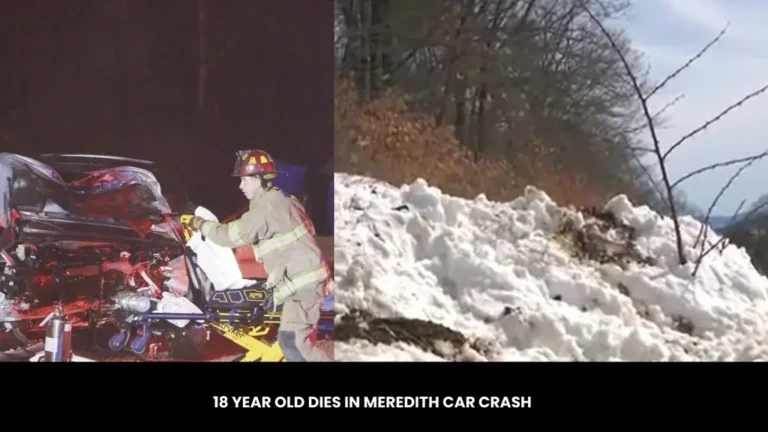Yellowstone Geyser Car Accident: What Really Happened?
The natural beauty of Yellowstone National Park has attracted millions of visitors each year, drawn to its stunning geysers, thermal features, and unique landscapes. However, alongside the park’s allure comes the need for caution due to its rugged and unpredictable environment. One such unfortunate event occurred on July 11, 2024, when a car accident took place near one of Yellowstone’s thermal geysers, the Semi-Centennial Geyser. This article explores the incident, its implications, and what it means for park safety.
What Happened in the Yellowstone Geyser Car Accident?
On July 11, 2024, a vehicle carrying five passengers veered off the road and crashed into the Semi-Centennial Geyser, located between Mammoth Hot Springs and Norris Junction. According to park officials, the accident occurred at approximately 10:40 a.m., and the SUV became submerged in the hot, acidic waters of the geyser, which can reach surface temperatures as high as 105°F(KTVB).
While the situation was dire, the passengers were fortunate enough to escape the vehicle on their own. They were immediately taken to a hospital for treatment of non-life-threatening injuries. The car was later removed from the geyser’s water, and Yellowstone authorities closed off the surrounding area for several hours to ensure safety and allow cleanup efforts.

The cause of the accident remains under investigation by park rangers, and the identities of the people involved have not been publicly released. This incident serves as a reminder of the importance of caution while driving within Yellowstone’s unique and sometimes hazardous environment.
The Dangers of Thermal Features in Yellowstone
Yellowstone National Park is home to some of the most iconic geothermal features in the world, including hot springs, geysers, and fumaroles. However, these thermal areas pose significant risks. The water in the geysers is often boiling, and the ground surrounding these features can be thin and unstable. Visitors are advised to stay on designated pathways to avoid injury.

Submerging in Hot, Acidic Water
The Semi-Centennial Geyser, where the accident occurred, contains water with a high acidity level and surface temperatures exceeding 100°F. This combination of heat and acidity makes these thermal areas incredibly dangerous. In this case, the vehicle became submerged in the geyser’s water, which not only damaged the car but also posed a threat to the passengers inside. The acidic nature of the geyser’s water could lead to severe burns or other injuries if someone were to come into direct contact with it for an extended period.
The five individuals involved in the accident were fortunate to escape without life-threatening injuries, but this event serves as a stark reminder of how perilous Yellowstone’s thermal features can be.
Park Safety Measures and Visitor Responsibility
Yellowstone National Park officials have long stressed the importance of safety when visiting the park, particularly around its thermal areas. There are numerous signs warning visitors to stay on marked trails and boardwalks to avoid the dangers associated with the geothermal landscape.
Road Safety in Yellowstone
The roads in Yellowstone can be winding, narrow, and often require drivers to navigate steep terrain. In some areas, particularly near thermal features, the combination of road conditions and high tourist traffic can make accidents more likely. Drivers are urged to stay alert, drive slowly, and follow all posted speed limits.
In the case of the Yellowstone geyser car accident, it’s unclear whether road conditions, driver error, or other factors played a role in the incident. However, it highlights the need for constant vigilance when driving in such a unique and potentially hazardous environment.
What Could Have Contributed to the Accident?

While the exact cause of the Yellowstone geyser car accident remains under investigation, several factors may have contributed to the incident. Understanding these factors can provide insight into how similar accidents can be avoided in the future.
1. Distracted Driving
Yellowstone National Park offers breathtaking views, but it’s important for drivers to stay focused on the road. Distracted driving, whether due to the scenery or other distractions inside the vehicle, is a leading cause of accidents in national parks. Tourists unfamiliar with the area may also become distracted by the park’s thermal features or wildlife, which can result in accidents.
2. Navigational Errors
Yellowstone’s roadways can be difficult to navigate, especially for visitors who are unfamiliar with the park’s layout. Roads around thermal areas are often narrow, and the proximity to geothermal features can make driving more challenging. A minor navigational mistake could have caused the vehicle in this accident to leave the road and enter the geyser.
3. Environmental Factors
Yellowstone’s weather and natural conditions can also play a role in accidents. Roads may become slippery due to rain, or visibility may be reduced due to fog or steam from geysers. These environmental factors could have contributed to the driver losing control of the vehicle.
4. Speeding
Speed limits in Yellowstone are strictly enforced, and for good reason. The park’s roads are not designed for high speeds, and exceeding the limit can increase the risk of an accident. While there is no indication that speeding was involved in this particular incident, it’s always important to follow speed regulations to ensure safety.
How Park Officials Respond to Incidents
Yellowstone National Park officials are well-prepared to respond to emergencies, including accidents like the one at the Semi-Centennial Geyser. After the incident, park rangers quickly arrived at the scene, ensuring the safety of the passengers and coordinating their transport to the hospital. They also worked to secure the area and eventually removed the submerged vehicle from the geyser.
Road Closures and Cleanup
In the aftermath of the accident, park officials temporarily closed the road near Roaring Mountain for several hours. This allowed emergency responders to remove the vehicle safely and clean up any debris left behind. These road closures are necessary to ensure visitor safety and protect the park’s delicate environment.
Preventing Future Accidents in Yellowstone
While accidents like this one are rare, they serve as a reminder of the potential hazards that come with visiting a geothermal wonder like Yellowstone National Park. There are several steps that visitors can take to reduce the risk of accidents and ensure a safe experience.
1. Stay Focused on the Road
One of the simplest yet most important things drivers can do is to stay focused on the road. While it’s tempting to take in the incredible views, drivers must remain vigilant and avoid distractions while navigating Yellowstone’s winding roads.
2. Follow Posted Speed Limits
Speed limits are strictly enforced in Yellowstone for a reason. The park’s roads are designed for slow, careful driving, and exceeding the speed limit can increase the risk of an accident. By obeying speed limits, drivers can better navigate the park’s challenging road conditions and avoid accidents.
3. Use Designated Viewing Areas
If visitors want to enjoy the park’s geothermal features, they should use designated viewing areas and boardwalks. These areas are specifically designed to keep visitors safe while allowing them to appreciate Yellowstone’s natural beauty. Driving too close to thermal features can be dangerous, as the ground near geysers is often thin and unstable.
4. Plan Ahead
Before embarking on a trip to Yellowstone, it’s important to plan ahead. Visitors should familiarize themselves with the park’s layout, road conditions, and potential hazards. This will help them avoid navigational errors and ensure a smoother, safer experience.
Conclusion
The Yellowstone geyser car accident serves as a cautionary tale about the importance of safety when visiting national parks, especially those with geothermal features like Yellowstone. While the individuals involved were fortunate to escape with non-life-threatening injuries, the incident highlights the potential dangers of distracted driving, navigational errors, and environmental factors in such a unique and hazardous environment.
By following safety guidelines, staying focused on the road, and respecting Yellowstone’s geothermal features, visitors can enjoy the park’s natural beauty without putting themselves or others at risk.
Frequently Asked Questions (FAQs)
What caused the Yellowstone geyser car accident?
The exact cause of the accident is still under investigation. Potential contributing factors include distracted driving, navigational errors, and environmental conditions.
Were there any fatalities in the accident?
No, all five individuals involved in the accident escaped the vehicle and were taken to the hospital with non-life-threatening injuries.
How dangerous are Yellowstone’s geysers?
Yellowstone’s geysers and other thermal features can be extremely dangerous. The water in these features is often boiling and acidic, and the ground around them can be thin and unstable.
How can accidents in Yellowstone be prevented?
Accidents can be prevented by following posted speed limits, staying focused on the road, and using designated viewing areas to enjoy the park’s geothermal features safely.
What is the Semi-Centennial Geyser?
The Semi-Centennial Geyser is one of Yellowstone’s many geothermal features, located between Mammoth Hot Springs and Norris Junction. It is known for its high water temperatures and acidic nature.






